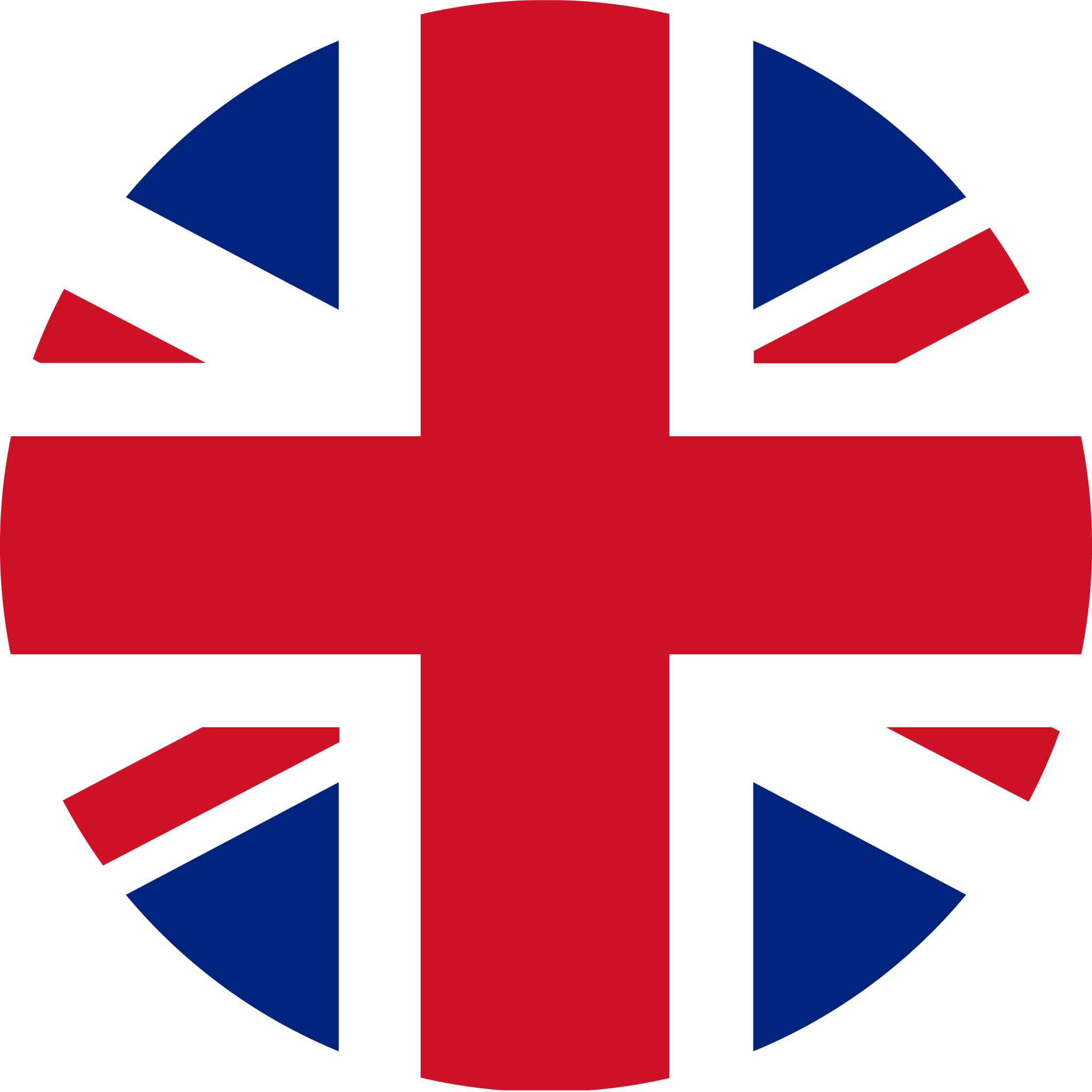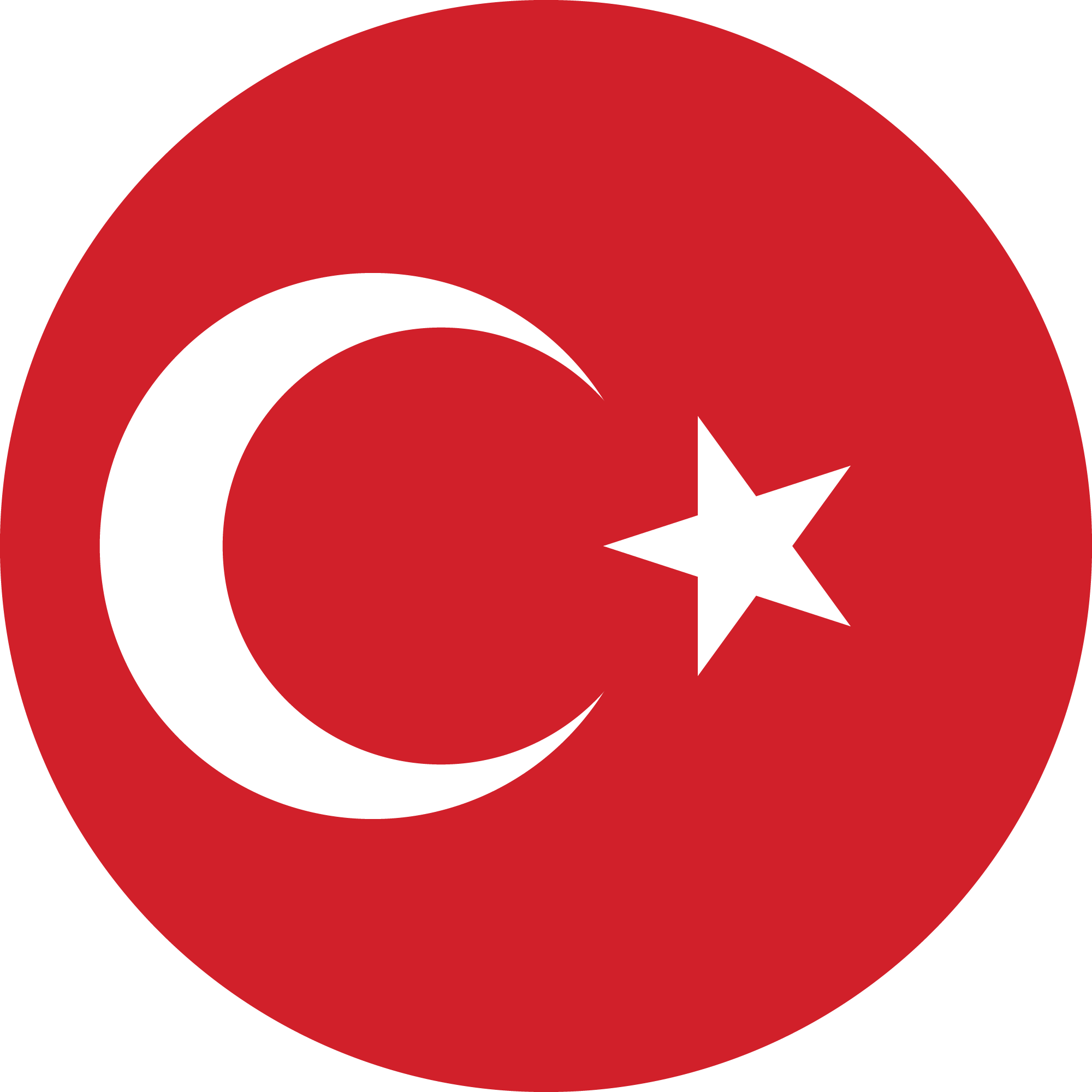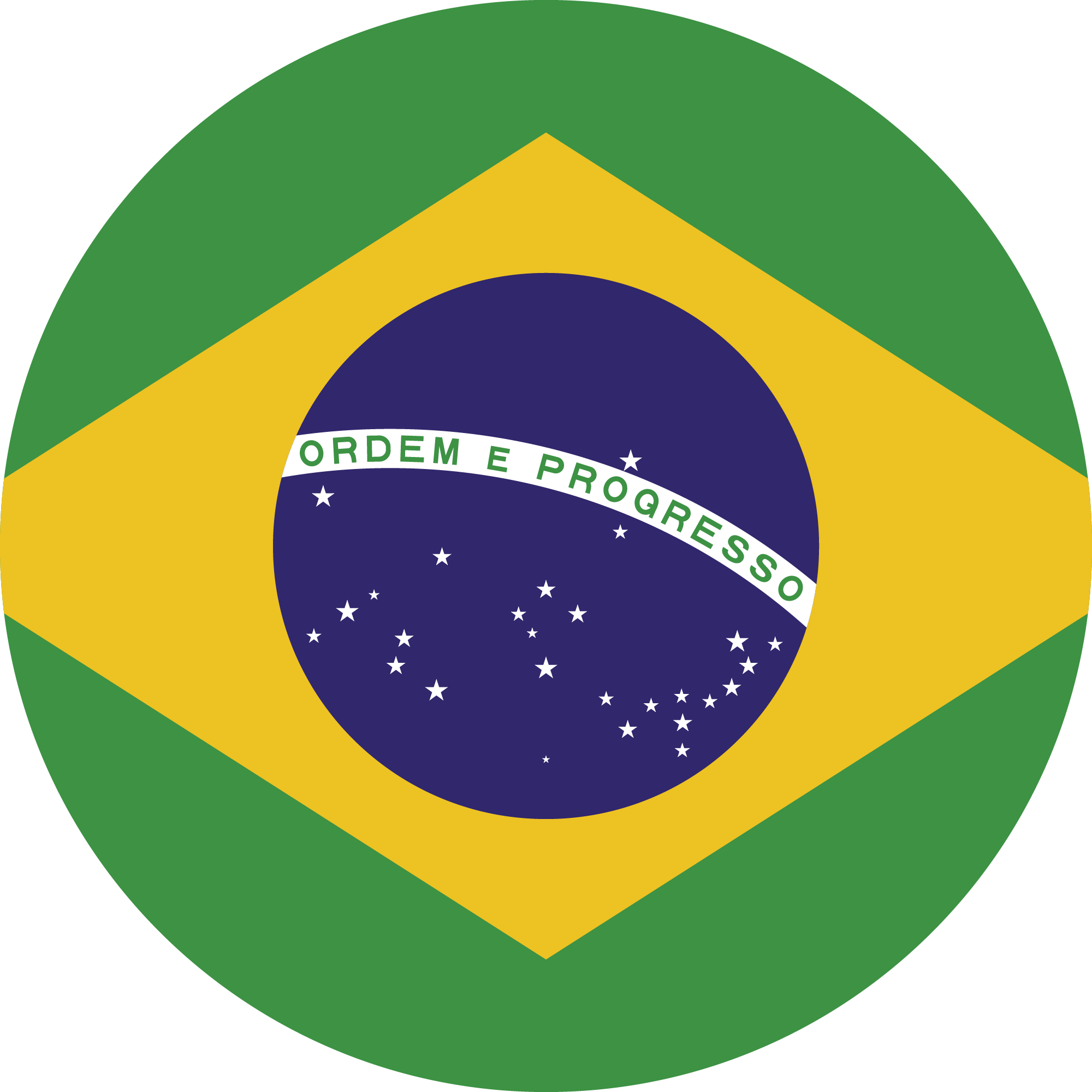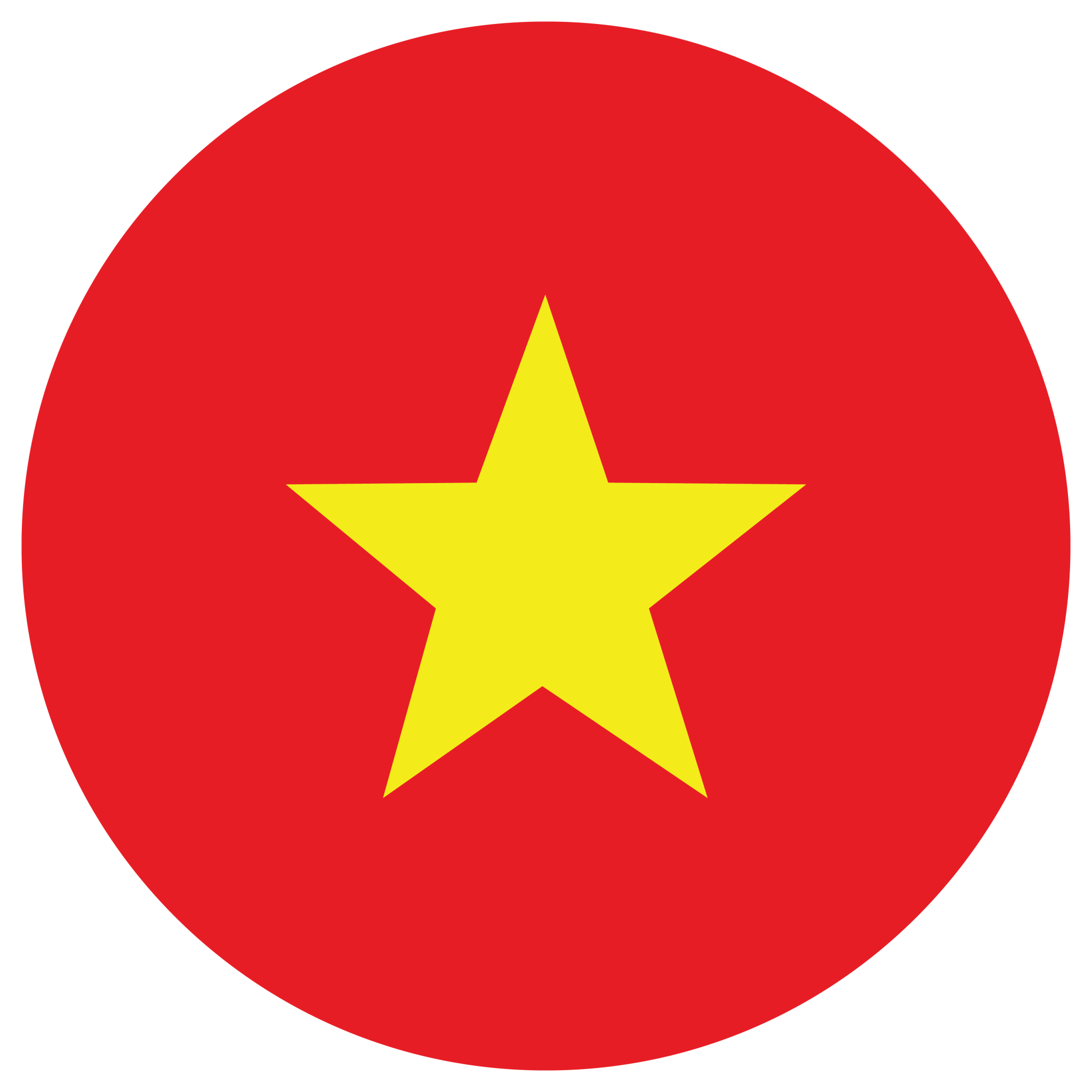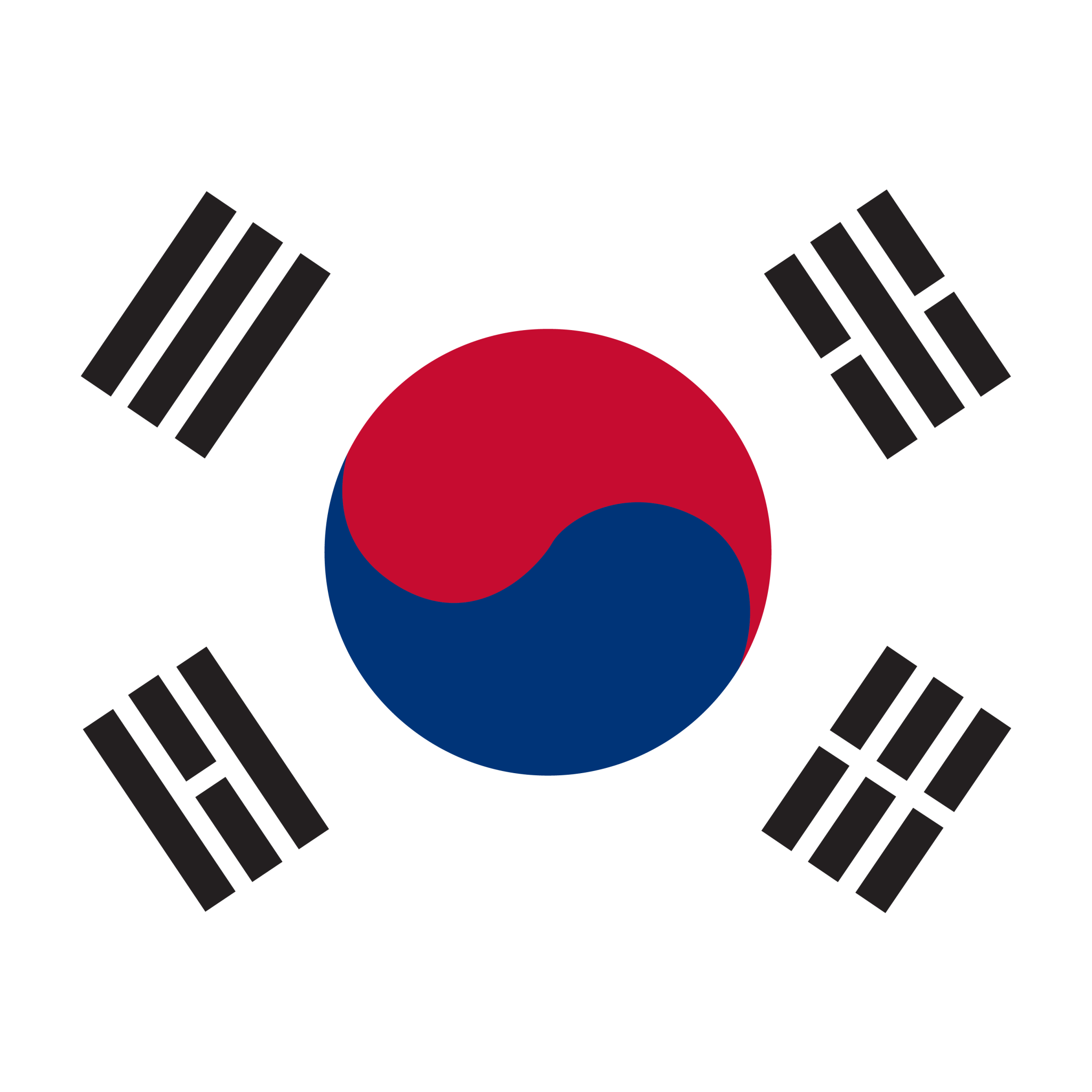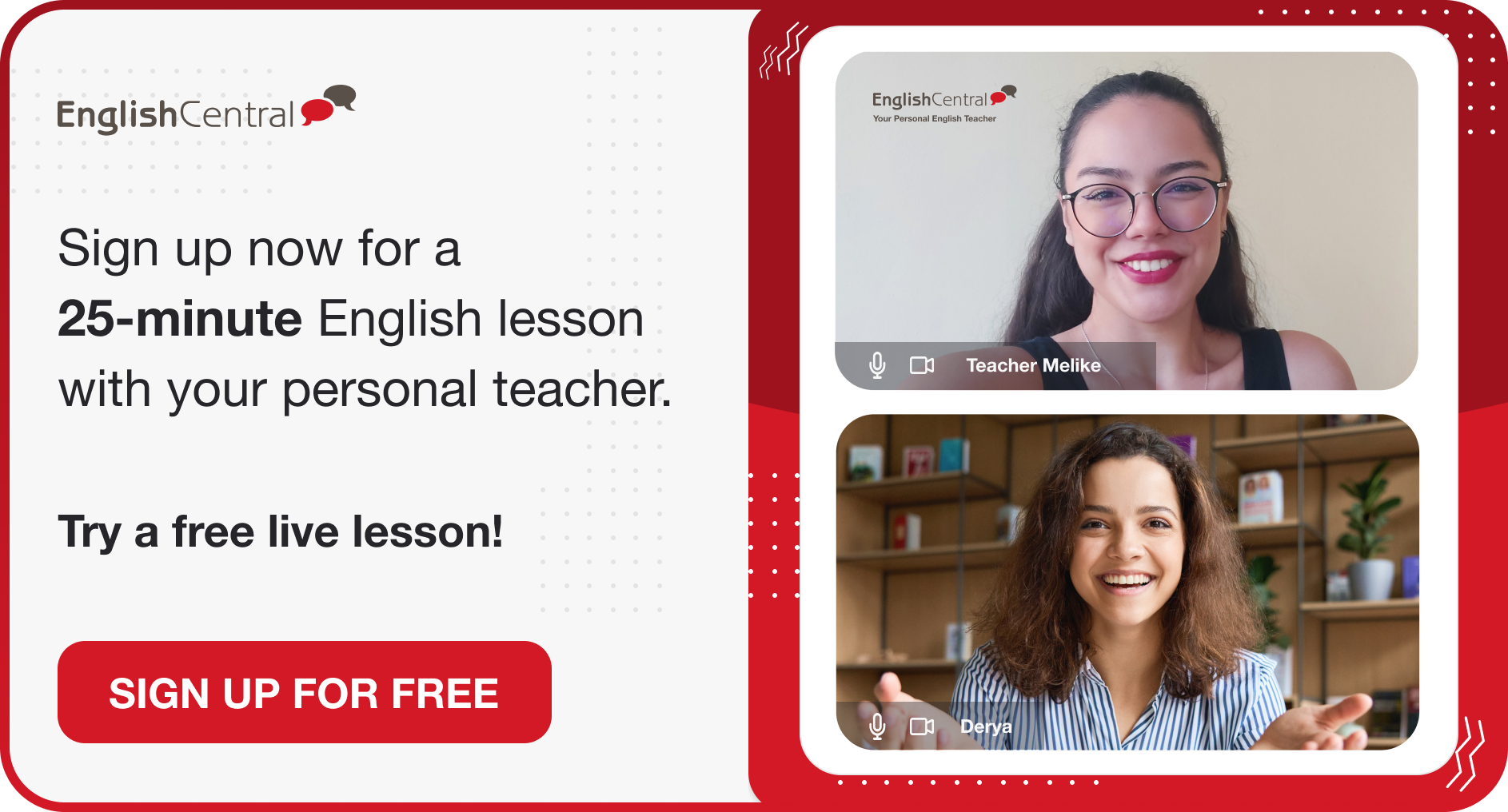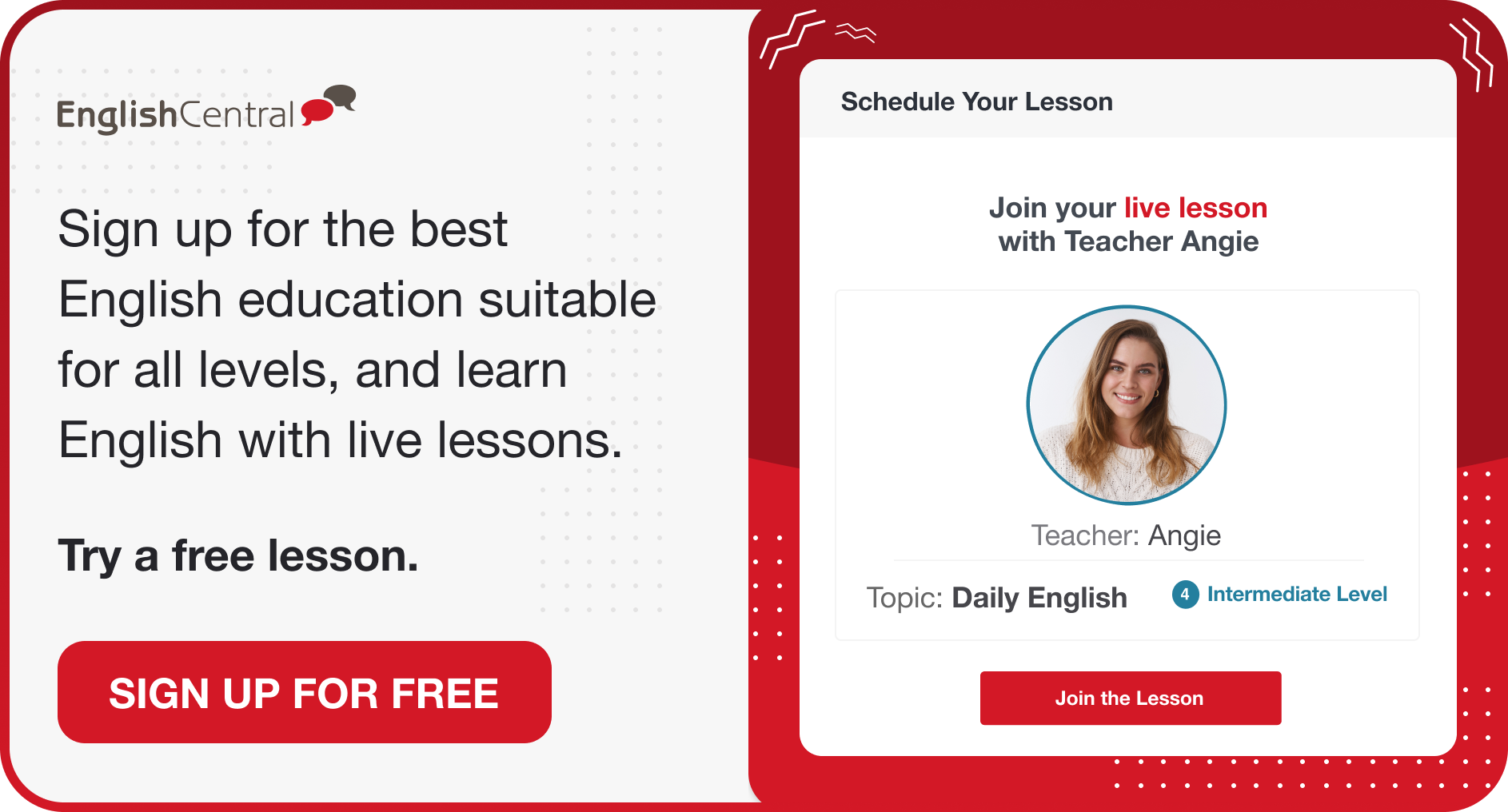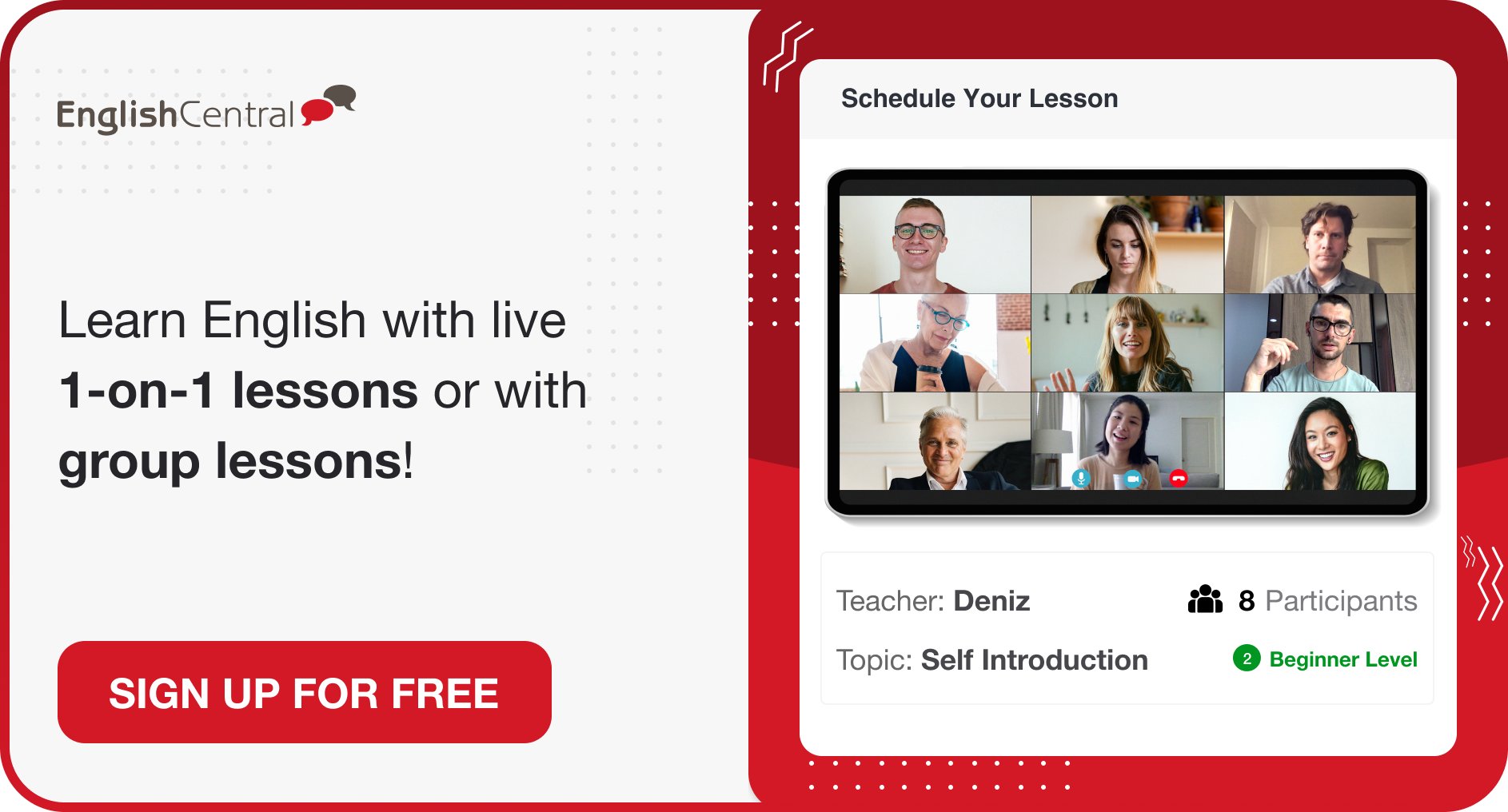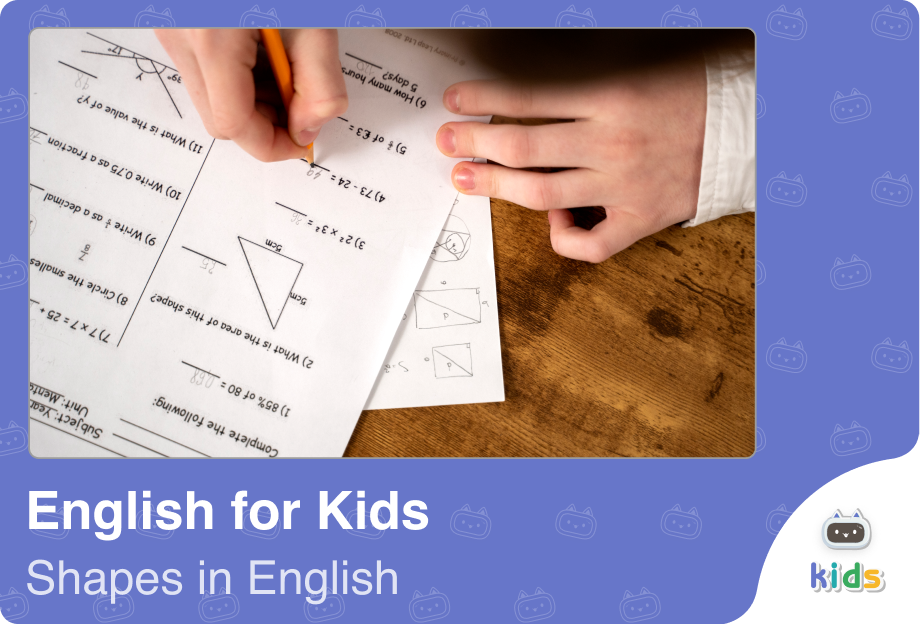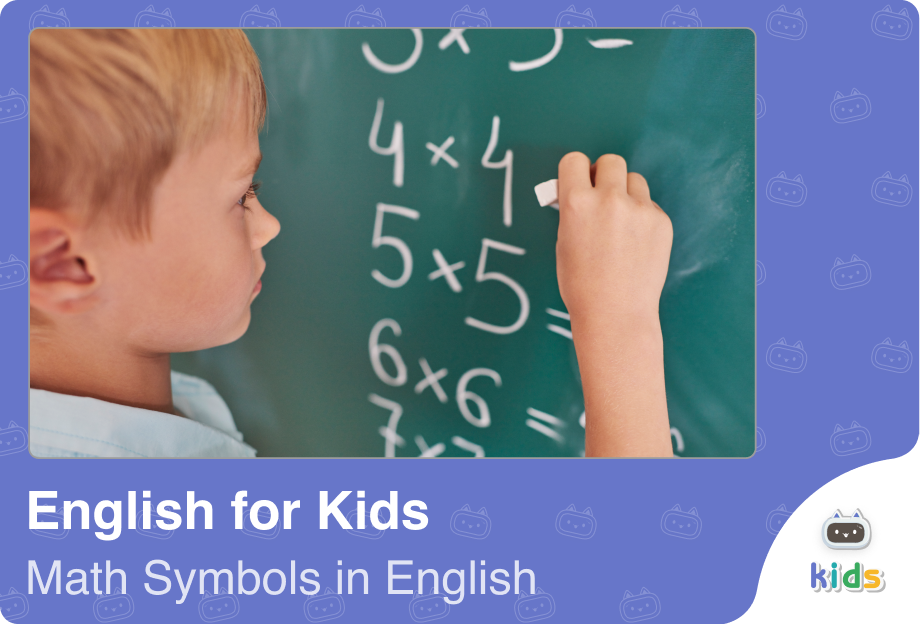There are various types of writing in English literature, each with its own style, structure, and purpose. Literary genres are the types of genres that help readers understand what to expect from a story or text. Knowing the genre can enhance your enjoyment and understanding of what you’re reading, whether it’s a novel, poem, or play. Our blog post will explore the essential literary genres in English, explain their key characteristics, and give examples to help you recognize and use them with confidence.
Learn English with EnglishCentral
Building your vocabulary is key to mastering a language, and learning new and generational words along with common words can make a big difference in how fluently and expressively you speak. EnglishCentral gives you the perfect tools and environment to expand your vocabulary, practice new words, and use them with confidence.
With 25-minute one-on-one lessons for all ages and levels, EnglishCentral offers personalized and effective learning. These online live sessions are led by expert English teachers who guide you step by step, helping you improve at your own pace. You can also join 40-minute group lessons, where you’ll take part in fun, interactive conversations with your teacher and classmates.
However, EnglishCentral is more than just lessons! You’ll have access to thousands of interactive videos tailored to different interests. With our Watch, Learn, Speak, and Discuss steps, you can reinforce vocabulary and plan private lessons based on your needs. Quizzes, word exercises, and our AI-powered teacher MiMi make practicing English even easier. MiMi is always available to help you navigate different scenarios, from business meetings to ordering food, so you’re prepared for real-life conversations.
After each lesson, MiMi provides personalized reports, tracking your progress and highlighting areas for improvement. This instant feedback helps you stay focused on your goals and gain the confidence to use English in everyday life.
A Guide to English Literary Genres
Here are literary genres you should know of.
Article
An article is a nonfiction piece of writing that explains information, analyzes, or expresses opinions about a specific topic. Articles, which are usually found in newspapers, magazines, or journals, are intended to provide information, persuade, or entertain readers. The introduction, body, and conclusion are all contained in a clear structure. The tone can be either formal and academic, or casual and conversational depending on the publication. “Consider the Lobster” by David Foster Wallace and Swift’s satirical piece “A Modest Proposal” are well-known examples of article writing.
Autobiography
An autobiography is a written account of the author’s personal life. Major life events, personal experiences, and significant achievements are typically covered by it. Autobiographies, which are written in the first person, give an understanding of the author’s thoughts, feelings, and motivations. The difference between them and memoirs is that they usually cover the author’s entire life instead of focusing on a particular period. Among the most influential autobiographies are Helen Keller’s The Story of My Life and Nelson Mandela’s Long Walk to Freedom.
Biography
A biography describes a person’s life in detail as written by someone else. It focuses on important life events, relationships, accomplishments, and the historical context of the subject’s life. In order to provide a factual narrative, biographies are often based on interviews, documents, and firsthand accounts. Their tone and style can be either academic, popular, or creative. Walter Isaacson’s Steve Jobs and Ron Chernow’s Alexander Hamilton are two highly regarded biographies.
Criticism
Literary criticism is a term used to describe the analysis, interpretation, and evaluation of literary works. It examines elements such as theme, style, structure, symbolism, and historical context. Criticizing involves the use of diverse theoretical approaches, such as feminism, psychoanalysis, structuralism, and post-colonialism. The aim is to enhance one’s comprehension of literature and explore its broader cultural significance. In the realm of literary criticism, works like The Madwoman in the Attic and Literary Theory: An Introduction have shaped modern analysis.
Diary / Journal
A diary or journal is a document that an individual keeps, often every day, to record their experiences, thoughts, and emotions. While many of these writings are later published, they are usually meant for private reflection. Diaries can be valuable historical or literary documents that give intimate insights into the mind of the writer. The writing style is usually first-person and informal, with a subjective tone. Personal journals such as Anne Frank’s The Diary of a Young Girl and Sylvia Plath’s private writings offer poignant insights into the authors’ inner lives.
Detective (Fiction)
Mystery, typically a crime or murder, is the focus of detective fiction, which is then investigated and ultimately solved. In most cases, the protagonist is a detective, whether they are an amateur or professional, who utilizes logic and observation to uncover clues. Suspense, red herrings, and a final revelation are the main features of this genre. Themes of justice, truth, and moral ambiguity are often observed. Detective fiction classics like The Hound of the Baskervilles and The Maltese Falcon showcase clever sleuths solving perplexing mysteries.
Dystopia
Dystopian fiction depicts a frightening, oppressive, or nightmarish future society. Dystopias often take place in a totalitarian state or post-apocalyptic world, and they critique contemporary political, social, or environmental trends by exaggerating their worst aspects. In these stories, the lack of freedom, individuality, or truth is highlighted. Surveillance, dehumanization, and resistance are some of the themes that are commonly discussed. Orwell’s 1984 and Huxley’s Brave New World are two chilling depictions of dystopian societies.
Drama
Drama is a genre of literature intended for performance on stage, screen, or radio. The presentation of conflict and emotion is done through dialogue and action rather than narration. Dramatic works, such as tragedies, comedies, and tragicomedies, frequently explore human struggles, relationships, and moral dilemmas. The structure is usually based on acts and scenes, with clear character arcs and plot development. Stage dramas like Shakespeare’s Hamlet and Tennessee Williams’ A Streetcar Named Desire highlight human conflict and emotion.
Epic
An epic is a long, narrative poem or story that recounts the heroic deeds of a legendary or historical figure. Typically, it is set in a grand, sweeping environment and frequently features supernatural elements or divine intervention. In epics, themes such as honor, fate, and the conflict between good and evil are explored. The Iliad, The Odyssey, and Beowulf are some of the most well-known examples.
Essay
An essay is a short piece of nonfiction prose that explores a specific idea, argument, or topic. The nature of essays can vary depending on whether they are analytical, personal, argumentative, or descriptive. The structure of them is typically based on an introduction, body paragraphs, and conclusion. Depending on the audience and purpose, the tone and style can change significantly. George Orwell’s Shooting an Elephant and Ralph Waldo Emerson’s Self-Reliance stand out as powerful essays on society and individuality.
Fable
A fable is a short fictional story that expresses a moral or lesson, typically featuring animals or inanimate objects as protagonists. Characters tend to be personified and display human traits and behaviors. The structure of fables is simple and they are designed to impart ethical or practical wisdom. Aesop’s fables are one of the most popular examples and fables like The Tortoise and the Hare, and The Boy Who Cried Wolf are often told to teach moral lessons using animals as characters.
Fairy Tale
A fairy tale is a short story that features magical or fantastical elements such as fairies, witches, talking animals, or enchanted objects. Moral lessons tend to be present in these stories and the narrative structure is often centered around good versus evil. Timeless, imaginary worlds are commonly the setting for fairy tales and they are intended for children. Cinderella, Snow White, and Hansel and Gretel are just a few of the classic examples.
Fantasy
Fantasy is a genre of fiction that involves magical elements and imaginary worlds not bound by the laws of reality. It often involves mythical creatures, magical systems, and epic quests. The power of belief or destiny can be explored in fantasy, where themes such as heroism, good versus evil, and the power of belief are explored. The Lord of the Rings and the Harry Potter series stand out as some of the most notable works.
Flash Fiction
Flash fiction is a short story that is typically under 1,000 words, but still has the essential elements of narrative, such as characters, conflict, and resolution. The genre demands tight writing, subtlety, and emotional impact. The most common approach for writers is to rely on implication and suggestion rather than extensive description. Its short length doesn’t mean it can’t be powerful and thought-provoking. “For sale: baby shoes, never worn” and George Saunders’ Sticks are striking examples of flash fiction’s emotional power in very few words.
Horror
Horror fiction’s goal is to make the reader feel fear, dread, or shock. The content is frequently characterized by supernatural elements, psychological terror, monsters, or graphic violence. The genre explores themes like death, the unknown, madness, and human evil. Societal anxieties and internal fears can be revealed through the use of horror, which can be deeply symbolic. Stephen King’s The Shining, Bram Stoker’s Dracula, and Shirley Jackson’s The Haunting of Hill House continue to haunt readers with fear and suspense.
Legend
A legend is a traditional story or tale that is rooted in historical events or real figures but also has mythical or supernatural elements. Legends often seek to explain origins, commemorate heroes, or pass down cultural values. Unlike myths, they are usually grounded in reality but stretch the truth for dramatic or moral effect. Examples that come to mind are the legend of King Arthur or Robin Hood.
Letter (Epistolary)
The epistolary form involves writing a story through letters, diary entries, emails, or other personal documents. The format allows for a personal look at the thoughts and emotions of characters while maintaining a fragmented, subjective view of events. Its realism and immediateness can make the reader feel like a direct recipient of the narrative. Dracula and The Color Purple are two of the most significant examples.
Memoir
A memoir is a nonfiction account focusing on a specific period, theme, or experience in the author’s life. Memoirs, unlike autobiographies, don’t aim to cover an entire life, but rather focus on important moments or relationships. Their exploration of identity, growth, or trauma involves combining memory, reflection, and narrative. The author’s writing is typically personal, emotional, and introspective. Memoirs such as Tara Westover’s Educated and Jeannette Walls’ The Glass Castle focus on resilience and personal transformation.
Microfiction
Microfiction is a story that is extremely short, typically under 300 words, but can be as brief as a single sentence. Writing a complete narrative with limited words is a challenging task for the writer, who often relies on suggestions, ambiguity, and metaphor. Each word must carry weight and purpose. Microfiction has gained popularity in both online and flash-based literary formats. Augusto Monterroso’s The Dinosaur and Amelia Gray’s Window are examples of how microfiction can say a lot in very few words.
Novel
A novel is a long fictional narrative that explores characters, settings, and plots in depth. It typically spans thousands of words and allows for the complex development of themes, subplots, and inner lives. Novels can belong to any genre, whether romance, historical, science fiction, literary, or any other genre, and vary in tone and structure. Their flexibility and expansiveness make them one of the most flexible and expansive literary forms. Classic novels like Pride and Prejudice, One Hundred Years of Solitude, and To Kill a Mockingbird continue to captivate readers around the world.
Novella
A novella is a short novel that is longer than a short story but less than a full-length novel, with an average length of around 20,000 to 50,000 words. It focuses on a single conflict or theme, offering more depth than a short story without the extensive subplots of a novel. The form is ideal for concise yet impactful storytelling. The Metamorphosis and Of Mice and Men are two novellas that are well-known.
Poetry
Poetry is a literary form that emphasizes the aesthetic and rhythmic qualities of language. By using meter, rhyme, imagery, metaphor, and other literary devices, emotions can be evoked or complex ideas can be conveyed in a condensed form. Poems can be structured like sonnets or haikus, or they can be freeform. Feeling, sound, and symbolism are often given priority in poetry over linear narrative. Iconic poetry collections like Walt Whitman’s Leaves of Grass and Eliot’s The Waste Land have left lasting marks on literature.
Science Fiction
Science fiction is a genre that explores speculative concepts often grounded in science or futuristic technology. Topics like space travel, time travel, artificial intelligence, and alien life are frequently discussed. Sci-fi can express societal concerns and ethical dilemmas that are connected to scientific advancement. It ranges from dystopian to utopian visions and is a vehicle for imaginative exploration. Science fiction classics such as Dune by Frank Herbert, Frankenstein by Mary Shelley, and Neuromancer by William Gibson explore advanced technology, artificial intelligence, and the boundaries of human knowledge.
Short Story
A short story is a brief work of fiction that focuses on a single plot, character, or theme. The design is to be read in one sitting and frequently has a twist or a moment of realization at the end. Because of the short length, all elements, including dialogue, description, and structure, must serve the main purpose of the story. Language economy and emotional or thematic impact are the main points that are stressed. Short stories like The Lottery, The Tell-Tale Heart, and Hills Like White Elephants show how much emotion and depth can fit into just a few pages.
Utopia
Utopian fiction imagines an ideal society free from suffering, inequality, or injustice. These stories examine the possibilities of a well-defined political, social, or economic system. Utopias frequently serve as a critique of the current societal flaws by suggesting visionary alternatives. The contrast between them and dystopias may cause questions about the feasibility or cost of perfection. Books like Thomas More’s Utopia and Edward Bellamy’s Looking Backward imagine ideal societies that challenge the flaws of the real world.
Folklore / Oral Tradition
Folklore and Oral Tradition are stories, beliefs, customs, and songs that are passed down verbally from one generation to the next. Myths, legends, fables, fairy tales, and proverbs that reflect the values and culture of a community are often included in these narratives. Unlike written literature, oral tradition is based on memory and performance, which can result in different tellings. It plays a vital role in preserving history, teaching moral lessons, and entertaining audiences across cultures. Folklore traditions include stories like the West African Anansi tales, the giant-sized exploits of Paul Bunyan, and the Indian epic Ramayana.
Frequently Asked Questions About English Literary Genres
How is poetry different from prose?
Poetry is written in verse and often uses meter, rhyme, and figurative language to create a musical or emotional effect. Typically, it is more compact and symbolic, with a focus on imagery and rhythm. Prose is written in sentences and paragraphs, while speech naturally follows certain patterns. The typical form of prose is novels, essays, and short stories.
What are the characteristics of drama?
Drama is a literary genre intended for performance on stage or screen, using dialogue and action to tell a story. The format is typically divided into acts and scenes, and it features characters who are facing conflict or emotional tension. Stage directions guide actors on movement and tone. Human relationships and moral dilemmas play an important role in drama.
What are common themes in English literary genres?
Common themes across English literary genres include love, conflict, identity, power, and morality. Numerous works explore the conflict between good and evil, personal development, or societal pressures. Themes like freedom, justice, and human nature also frequently appear. By using these recurring ideas, readers can connect with the text and consider real-world issues.
How do genres evolve over time?
Cultural values, technologies, and audience tastes influence the evolution of genres. Modern horror is a result of the evolution of early Gothic fiction, and epistolary novels were replaced by digital storytelling. Writers often blend or subvert genre conventions to create new forms. These changes keep literature fresh and reflective of contemporary concerns.
Would you like to put what you have learned into practice? You can access everything you need to learn English on a single platform! With 25-minute one-on-one live English lessons, 40-minute group lessons, more than 30,000 interactive videos, vocabulary learning tools, AI-supported tutor MiMi, quizzes, and interactive activities, EnglishCentral offers its users a personalized and quality education plan at an affordable price. How about registering for EnglishCentral now and starting to learn English?
